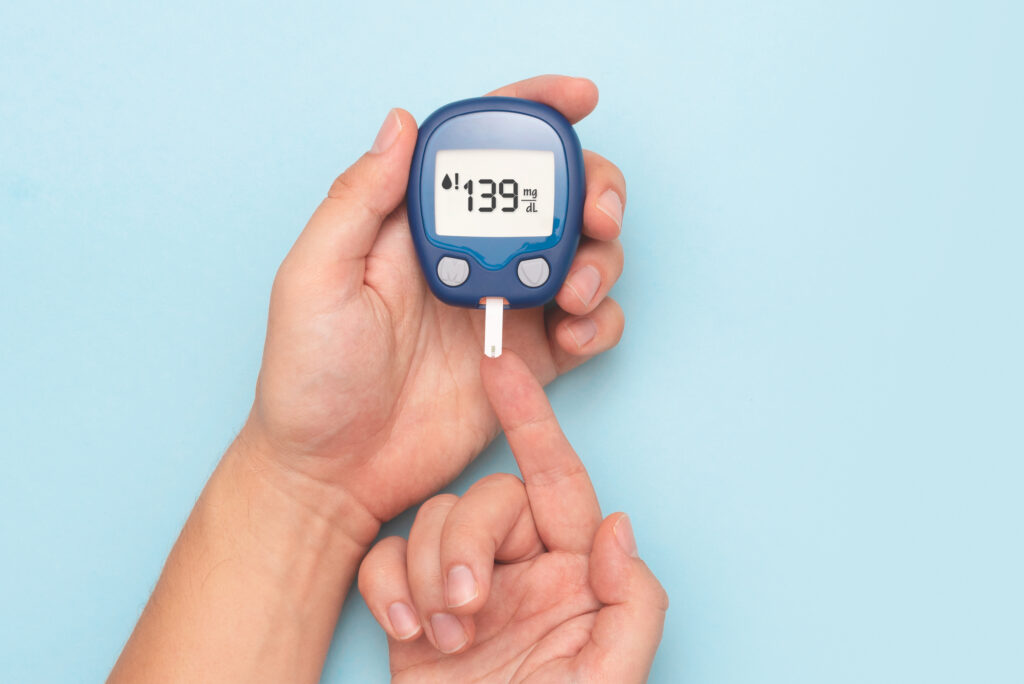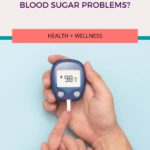Do you have blood sugar problems?
Did you know the sugar you eat is very likely NOT the problem? (Even the processed sugar – gasp – more on that later).
We live in incredible times. The fact that we are able to monitor blood sugar levels and administer insulin and medication when needed is life-saving. Yes, at the same time, we are still in the dark ages, as these tools do nothing to address the root of the problem.
What are the two most common mistakes when trying to heal blood sugar issues?
Mistake #1
The first mistake is that the blame has been squarely placed on sugar, and there is no discernment in the kind of sugar. However, even when people remove sugar from their diet, blood sugar problems persist. While avoiding unproductive carbohydrates, refined sugars, and processed sugars is important, removing these alone does not solve the problem. In fact, when we are told to avoid “sugar,” most people believe that means natural sugars as well. Removing those from your diet is the biggest pitfall. Why? Because sugar is not sugar is not sugar. We can all agree that the sugar from berries and fruit is not the same quality as corn syrup or processed white beet sugar. Natural sugars such as those from fruit, honey, winter squash, and potatoes are bonded with phytochemicals, antioxidants, vitamins and minerals. This type of sugar is what your body desperately needs. These foods are called “Critical Clean Carbohydrates.” by Medical Medium.
Our natural craving for sugar comes from a true biological need for sugar. Yes, you heard that right. We have a biological need for clean glucose because glucose is THE fuel for human bodies. When you go to the doctor, they never check your blood fat levels, they are always checking your blood sugar levels, because it is critical to monitor is vital sign. Any signs of low or high blood sugar indicates there is something deeper that is out of balance in the body.
The biggest mistake is thinking that the sugar we eat is automatically the problem.
Mistake #2
Most people dealing with blood sugar issues are also told to keep fats in their diet, and in many cases, they will be advised to add more fats – aka ‘protein’ by way of eggs, dairy and meat. This is the second major pitfall – removing all sugar from the diet AND adding in tons of protein and fat.
Removing or limiting sugars while increasing fats (even those considered “healthy fats” from nuts, seeds, avocado, and coconut) will eventually worsen the very condition you are trying to control. This is why diabetics being put on high-fat, high-protein diets and pumping insulin does not work because while this will help to manage a diabetic’s symptoms, it never takes them out of the hole of depending on drugs and insulin to keep alive and well.
How do we develop blood sugar problems? Well, it starts with insulin resistance. Insulin resistance is when the insulin we are producing is not effective in managing our blood sugar by lowering it after a high carb meal. You can be insulin resistant for years without exhibiting a blood sugar problem. And why are often asymptomatic with blood sugar as the problem slowly develops? Because our livers are getting fatty slowly and they are the root of the issue when dealing with blood sugar problems, both high blood sugar and low.
It Starts With The Liver
How do blood sugar issues start in the liver? When the liver becomes sluggish, stagnant, or pre-fatty or indeed fatty. To understand this better, we have to understand the liver’s role in The liver’s glucose storage is the key to preventing blood sugar issues.
The liver takes glucose from the foods we eat and uses it in every one of the over 2,000 functions it performs. Our livers store some of the glucose we consume fresh and ready to be used, and the rest it stores as glycogen, turning it back into glucose when the liver activates it. Whether or not you develop blood sugar problems depends entirely on your liver’s storage bins of glucose and glycogen.
Our livers can be weakened due to high fat (high protein) diet, viral load, toxic heavy metals, and other poisons. If this happens, the liver can no longer store glucose and glycogen the way it needs.
“Imbalance of blood sugar begins with your liver losing its sugar supply.”
-Anthony William, Liver Rescue
When the liver’s reserves of glucose and glycogen drop, there will not be enough to protect the pancreas at a certain point. Without the glucose coming from the liver between meals to maintain stable blood sugar, the pancreas loses its stability and fluctuates in its insulin production. High insulin levels happen when the pancreas produces insulin to seek out any sugar it can find to push it into cells; this becomes virtually impossible when the bloodstream is filled with fat.
“As a result, the pancreas weakens, insulin production lessens, and insulin resistance hits a crisis point.”
-Anthony William, Liver Rescue
At this point, blood sugar becomes unstable – this is when your A1C levels take off. You are labeled with pre-diabetes or type 2 diabetes.
Why Fat Is The Enemy
The biggest problem with blood sugar levels is your fat consumption. When your blood is filled with fat sources from your diet, the liver gets starved of glucose and is unable to restore its reserves. Blood filled with fat also prevents sugar from doing its job in the body – the fat blocks the sugar from being able to access the organs, glands, and nervous system. With an abundance of fat in the bloodstream, it becomes challenging for insulin to attach to a sugar and then speak to the tissue cells to open and receive the sugar.
A high-fat diet can make the liver sluggish because your liver must process the fat you consume. A sluggish liver is unable to store and release glucose as it should. The pancreas also takes a hit with a high-fat diet, as this organ is called upon to release enzymes to help with fat digestion. In addition, with a high-fat diet, the adrenals flood the body with adrenaline in order to aid in digestive strength and help fat move through your system. Adrenaline can be corrosive to the pancreas, hindering its ability to produce insulin to keep glucose levels in check.
What To Eat To Heal Blood Sugar Issues
It is always best to start by bringing fruit back into your diet. The best way to consume such critical clean carbohydrates (CCC) is without any fat present. When you eat CCC’s with fat, the power of the CCC is diminished because the fat gets in the way of allowing the carbohydrates to be delivered into cells. That being said, even if you cannot reduce your fat intake significantly, fruit has a naturally low sugar content, so it will not clash with the fats. Fruit contains natural, healthy sugars that will benefit you no matter your level of fat consumption (although the greatest benefit will come when you implement a low-fat diet).
“In the end, it’s these natural sugars that will truly heal and reverse a liver condition so you don’t have type 2 diabetes or insulin resistance anymore.”
-Anthony William, Liver Rescue
If you reduce your fat intake, you can begin to bring in foods that will help resolve blood sugar issues, such as critical clean carbohydrates (CCC). Foods like: potatoes, sweet potatoes, winter squash, and all other fruits. Melons are particularly incredible as they hold natural sodium combined with natural sugar. With type 2 diabetes or hypoglycemia, the best fruits to eat are wild blueberries, papayas, blackberries, apples, and raspberries
“Let more of your calories derive from natural, healthy carbs and sugar than from fat, and improvements will come.”
-Anthony William, Liver Rescue
Vegetables are also critical when dealing with blood sugar issues. Leafy greens like lettuce, arugula, spinach, and kale; herbs such as parsley and celery; sprouts and asparagus will restore your blood sugar. These vegetables all have critical mineral salts which bind to natural sugars to drive glucose into our cells more efficiently. Furthermore, they “help detoxify the liver, strengthen glucose levels, boost the adrenal glands, and stabilize insulin.”
Moving Forward
While it is critical to know what foods to remove from your diet – eggs and dairy being at the top of that list, it is even more important to understand what foods truly heal your body. When you bring in healing foods, you inevitably crowd out the troublemakers.
When it comes to healing blood sugar issues, I have an incredible masterclass: Cleanse Your Liver To Heal Chronic Illness. Your liver needs support. No matter what your symptoms, this powerful masterclass will teach you how to cleanse your liver to heal chronic illness.
This class will help you transform your health by teaching you how to…
- reverse insulin resistance and a fatty liver
- reverse type 2 diabetes
- protect your blood sugar from fluctuations
- eat to heal
The knowledge from this powerful masterclass will help put you on the road to healing!
Let me know in the comments below what steps you are taking to maintain healthy blood sugar levels. I look forward to hearing from you.
To your health & happiness,
Muneeza
P.S. This masterclass breaks down the real root of blood sugar imbalances, insulin resistance, and diabetic symptoms — and how reducing fat the right way can actually restore energy, calm your body, and support long-term healing.
You don’t have to fear fruit, you don’t have to stay stuck in cycles of fatigue or confusion, you can feel steady, clear, and nourished again.
If you would like to learn more about this masterclass, click here!






